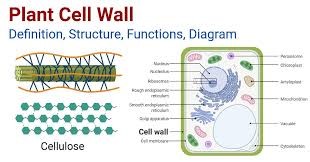Replication takes place in what organelle?
Chloroplast.
Nucleus.
Ribosome.
Golgi apparatus.
Correct Answer : B
Replication, the process of copying DNA to produce identical daughter DNA molecules, takes place in the nucleus of eukaryotic cells. The nucleus contains the cell's genetic material, organized into chromosomes, which consist of long strands of DNA. During replication, the DNA molecule unwinds, and the enzyme DNA polymerase adds complementary nucleotides to each strand, resulting in the formation of two identical DNA molecules. Replication is a crucial process that ensures genetic continuity between generations of cells and is essential for growth, development, and repair of tissues in multicellular organisms.
HESI A2 Exam Quiz Bank
TEAS 7 Exam Quiz Bank
Find More HESI Questions
HESI A2 Questions: We got the latest updated HESI A2 Questions
100% Money Refund: 100% money back guarantee if you take our full
assessment pass with 80% and fail the actual exam.
Live Tutoring: Fully customized live tutoring lessons.
Guaranteed A Grade: All students who use our services pass with 90%
guarantee.
Related Questions
Correct Answer is A
Explanation
Animals are composed primarily of eukaryotic cells. Eukaryotic cells are characterized by having a true nucleus enclosed within a membrane, along with other membrane-bound organelles such as mitochondria, endoplasmic reticulum, Golgi apparatus, and lysosomes. These cells are structurally and functionally more complex than prokaryotic cells, which lack a nucleus and membrane-bound organelles. Animal cells are the building blocks of animal tissues and organs, and they perform various functions necessary for the survival and functioning of multicellular animal organisms.
Correct Answer is A
Explanation
The magnification of a standard ocular lens on a light microscope is typically 10X. The ocular lens, also known as the eyepiece, is the lens closest to the observer's eye. It magnifies the image produced by the objective lens, which is the lens closer to the specimen being observed. Together, the ocular lens and the objective lens determine the total magnification of the microscope. The standard ocular lens provides a magnification of 10X, meaning it magnifies the image by a factor of 10 compared to the naked eye.
Correct Answer is B
Explanation
Replication, the process of copying DNA to produce identical daughter DNA molecules, takes place in the nucleus of eukaryotic cells. The nucleus contains the cell's genetic material, organized into chromosomes, which consist of long strands of DNA. During replication, the DNA molecule unwinds, and the enzyme DNA polymerase adds complementary nucleotides to each strand, resulting in the formation of two identical DNA molecules. Replication is a crucial process that ensures genetic continuity between generations of cells and is essential for growth, development, and repair of tissues in multicellular organisms.
Correct Answer is B
Explanation
The cell wall is the part of a plant cell that acts as a barrier and provides support to the cell. It is a rigid, protective structure located outside the cell membrane and is composed primarily of cellulose, a complex carbohydrate. The cell wall gives plant cells their characteristic shape and provides mechanical support, preventing the cell from bursting due to osmotic pressure. It also helps regulate the movement of water and solutes into and out of the cell and protects the cell from pathogens and mechanical damage. In addition to cellulose, the cell wall may contain other polysaccharides, proteins, and lignin, depending on the type of plant cell and its function.

This question was extracted from the actual HESI A2 Exam. Ace your TEAS exam with the actual HESI A2 Exam questions, Start your journey with us today
Visit Naxlex, the Most Trusted HESI Prep Platform With Guaranteed Pass of 90%.
Money back guarantee if you use our service and fail the actual exam. Option of personalised live tutor on your area of weakness.
